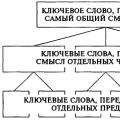Y 1 2x 3 graph. Quadratic and cubic functions
“Natural logarithm” - 0.1. Natural logarithms. 4. Logarithmic darts. 0.04. 7.121.
“Power function grade 9” - U. Cubic parabola. Y = x3. 9th grade teacher Ladoshkina I.A. Y = x2. Hyperbola. 0. Y = xn, y = x-n where n is the given natural number. X. The exponent is an even natural number (2n).
“Quadratic function” - 1 Definition of a quadratic function 2 Properties of a function 3 Graphs of a function 4 Quadratic inequalities 5 Conclusion. Properties: Inequalities: Prepared by 8A class student Andrey Gerlitz. Plan: Graph: -Intervals of monotonicity for a > 0 for a< 0. Квадратичная функция. Квадратичные функции используются уже много лет.
“Quadratic function and its graph” - Solution.y=4x A(0.5:1) 1=1 A-belongs. When a=1, the formula y=ax takes the form.
“8th grade quadratic function” - 1) Construct the vertex of a parabola. Plotting a graph of a quadratic function. x. -7. Construct a graph of the function. Algebra 8th grade Teacher 496 Bovina school T.V. -1. Construction plan. 2) Construct the axis of symmetry x=-1. y.
Build function
We offer to your attention a service for constructing graphs of functions online, all rights to which belong to the company Desmos. Use the left column to enter functions. You can enter manually or using the virtual keyboard at the bottom of the window. To enlarge the window with the graph, you can hide both the left column and the virtual keyboard.
Benefits of online charting
- Visual display of entered functions
- Building very complex graphs
- Construction of graphs specified implicitly (for example, ellipse x^2/9+y^2/16=1)
- The ability to save charts and receive a link to them, which becomes available to everyone on the Internet
- Control of scale, line color
- Possibility of plotting graphs by points, using constants
- Plotting several function graphs simultaneously
- Plotting in polar coordinates (use r and θ(\theta))
With us it’s easy to build charts of varying complexity online. Construction is done instantly. The service is in demand for finding intersection points of functions, for depicting graphs for further moving them into a Word document as illustrations when solving problems, and for analyzing the behavioral features of function graphs. The optimal browser for working with charts on this website page is Google Chrome. Correct operation is not guaranteed when using other browsers.
Let's look at how to build a graph with a module.
Let us find the points at the transition of which the sign of the modules changes.
We equate each expression under the modulus to 0. We have two of them x-3 and x+3.
x-3=0 and x+3=0
x=3 and x=-3
Our number line will be divided into three intervals (-∞;-3)U(-3;3)U(3;+∞). At each interval, you need to determine the sign of the modular expressions.
1. This is very easy to do, consider the first interval (-∞;-3). Let’s take any value from this segment, for example, -4, and substitute the value of x into each of the modular equations.
x=-4
x-3=-4-3=-7 and x+3=-4+3=-1
Both expressions have negative signs, which means we put a minus before the modulus sign in the equation, and instead of the modulus sign we put parentheses and we get the required equation on the interval (-∞;-3).
y= — (x-3)-( — (x+3))=-x+3+x+3=6
On the interval (-∞;-3) the graph was obtained linear function(direct) y=6
2. Consider the second interval (-3;3). Let's find what the graph equation will look like on this segment. Let's take any number from -3 to 3, for example, 0. Substitute 0 for the value x.
x=0
x-3=0-3=-3 and x+3=0+3=3
The first expression x-3 has a negative sign, and the second expression x+3 has a positive sign. Therefore, before the expression x-3 we write a minus sign, and before the second expression a plus sign.
y= — (x-3)-( + (x+3))=-x+3-x-3=-2x
On the interval (-3;3) we obtained a graph of a linear function (straight line) y=-2x
3. Consider the third interval (3;+∞). Let’s take any value from this segment, for example 5, and substitute the value x into each of the modular equations.
x=5
x-3=5-3=2 and x+3=5+3=8
For both expressions, the signs turned out to be positive, which means we put a plus in front of the modulus sign in the equation, and instead of the modulus sign we put parentheses and we get the required equation on the interval (3;+∞).
y= + (x-3)-( + (x+3))=x-3-x-3=-6
On the interval (3;+∞) we obtained a graph of a linear function (straight line) у=-6
4. Now let's summarize. Let's plot the graph y=|x-3|-|x+3|.
On the interval (-∞;-3) we build a graph of the linear function (straight line) y=6.
On the interval (-3;3) we build a graph of the linear function (straight line) y=-2x.
To construct a graph of y = -2x, we select several points.
x=-3 y=-2*(-3)=6 the result is a point (-3;6)
x=0 y=-2*0=0 the result is a point (0;0)
x=3 y=-2*(3)=-6 the result is point (3;-6)
On the interval (3;+∞) we build a graph of the linear function (straight line) у=-6.
5. Now let’s analyze the result and answer the question, find the value of k at which the straight line y=kx has with the graph y=|x-3|-|x+3| a given function has exactly one common point.
The straight line y=kx for any value of k will always pass through the point (0;0). Therefore, we can only change the slope of this line y=kx, and the coefficient k is responsible for the slope.
If k is any positive number, then there will be one intersection of the straight line y=kx with the graph y=|x-3|-|x+3|. This option suits us. 
If k takes the value (-2;0), then the intersection of the straight line y=kx with the graph y=|x-3|-|x+3| there will be three. This option does not suit us. 
If k=-2, there will be many solutions [-2;2], because the straight line y=kx will coincide with the graph y=|x-3|-|x+3| in this area. This option does not suit us. 
If k is less than -2, then the straight line y=kx with the graph y=|x-3|-|x+3| will have one intersection. This option suits us. 
If k=0, then the intersection of the straight line y=kx with the graph y=|x-3|-|x+3| there will also be one. This option suits us. 
Answer: for k belonging to the interval (-∞;-2)U)
 The formation of autocracy from Ivan III to the Time of Troubles What modern historians say about Ivan 3
The formation of autocracy from Ivan III to the Time of Troubles What modern historians say about Ivan 3 Standards of etiquette and speech behavior
Standards of etiquette and speech behavior Vygotsky about memory and its development: the role of artificial means
Vygotsky about memory and its development: the role of artificial means